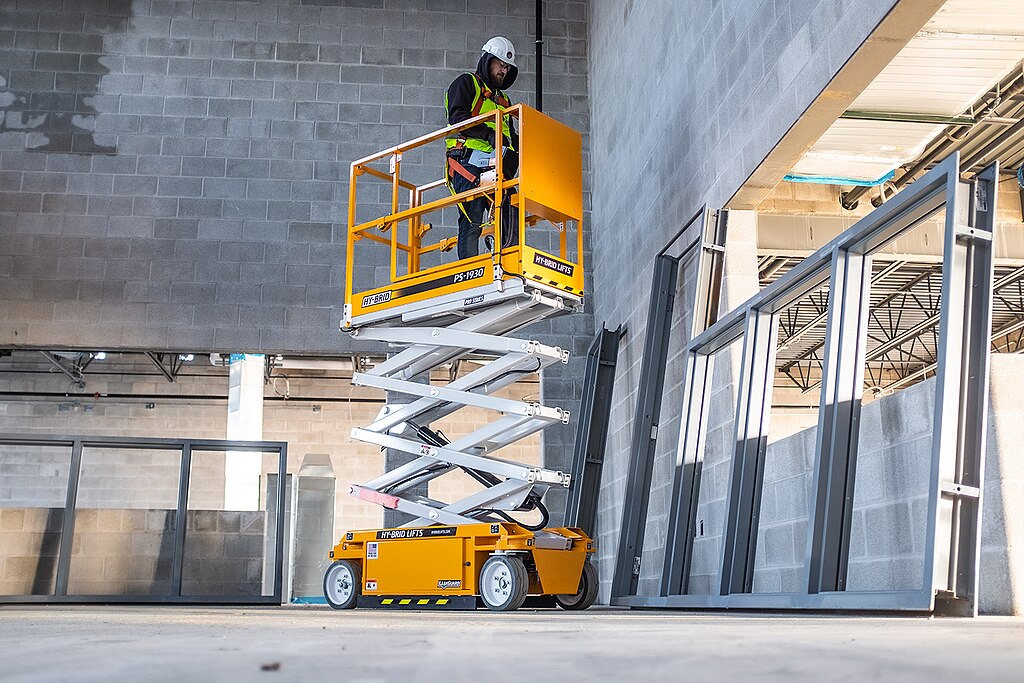Electric Scaffolding Lifts: A Comprehensive Guide to Vertical Access Solutions
Electric scaffolding lifts have revolutionized how workers access elevated areas across construction, maintenance, and industrial sectors. These versatile machines combine the stability of traditional scaffolding with powered mobility, creating safer and more efficient vertical access solutions. This article explores the inner workings of electric scaffolding lifts, their essential features, and the critical safety mechanisms that make them valuable assets on worksites worldwide.

How Electric Scaffolding Lifts Work for Vertical Access
Electric scaffolding lifts, also known as mast climbing work platforms or electric scaffold towers, operate on a surprisingly straightforward principle. These systems use electric motors connected to a rack-and-pinion or hydraulic lifting mechanism to raise and lower platforms along vertical masts. Unlike traditional scaffolding that requires manual assembly at each level, electric lifts allow for smooth vertical movement with minimal physical effort. The electric motor draws power from either onboard batteries or direct electrical connections, engaging gears that interact with the mast to create controlled vertical movement. Most systems employ a single-mast design for smaller applications or a twin-mast configuration for heavier loads and wider platforms, providing flexible solutions for various worksite requirements.
Key Features: Platform Height and Load Capacity Explained
The defining characteristics of electric scaffolding lifts revolve primarily around their platform height capabilities and load-bearing capacities, two factors that determine their suitability for specific applications.
Platform height represents the maximum vertical distance the lift can safely reach. Standard electric scaffolding lifts typically offer working heights between 20 and 100 feet, though specialized models can extend significantly higher. The height capability is determined by the mast design, motor power, and overall structural integrity of the system. Most models feature modular mast sections that can be added or removed to adjust the maximum working height according to project requirements.
Load capacity indicates the maximum weight an electric scaffolding lift can safely support during operation. This specification typically ranges from 500 to 10,000 pounds, varying widely based on the model and configuration. Load capacity encompasses not only workers but also tools, materials, and equipment placed on the platform. Manufacturers determine these ratings through comprehensive stress testing and engineering analysis, incorporating significant safety margins. It’s worth noting that load capacity often decreases as platform height increases due to the physics of supporting weight at greater elevations.
Safety Functions and Control Mechanisms in Electric Scaffolding
Safety represents the paramount concern in electric scaffolding lift design, with manufacturers implementing multiple redundant systems to protect operators. Modern units incorporate emergency stop buttons that immediately halt all movement when activated. Overload sensors detect when the platform carries weight beyond its rated capacity and prevent operation until the excess weight is removed. Limit switches automatically stop movement when the platform reaches its maximum or minimum height, preventing mechanical damage or unsafe positions.
Wind sensors on outdoor models detect dangerous gusts and trigger warnings or automatic shutdown procedures when conditions exceed safe operating parameters. Many advanced systems also feature self-leveling technology that continuously monitors and adjusts the platform’s horizontal position, even on uneven terrain or as loads shift during operation.
Control mechanisms for electric scaffolding lifts have evolved significantly from basic up/down switches to sophisticated interfaces. Standard control panels typically feature simple, intuitive buttons for raising, lowering, and emergency stopping, often with key-switch activation to prevent unauthorized use. More advanced models incorporate joystick controls for smoother operation and programmable height settings that allow operators to preset common working elevations for one-touch positioning. Remote control options enable operation from the ground, improving safety by allowing operators to position the platform while maintaining a broader view of potential hazards.
Maintenance Requirements for Electric Scaffolding Systems
Regular maintenance is essential for ensuring the continued safety and functionality of electric scaffolding lifts. Daily inspections should include checking for loose connections, damaged components, fluid leaks, and proper function of all control systems. Mast sections require periodic lubrication based on the manufacturer’s recommendations, typically using specialized grease that can withstand extreme pressures and environmental exposure. The drive system, whether rack-and-pinion or hydraulic, needs regular inspection for wear patterns, with replacement of components before they reach critical deterioration points.
For battery-powered models, proper charging procedures and battery maintenance significantly impact operational reliability and service life. Electrical systems require inspection by qualified technicians to identify potential shorts, damaged insulation, or connection issues. Most manufacturers recommend comprehensive professional inspections annually or after every 1,000 hours of operation, whichever comes first, to identify potential issues before they become safety hazards.
Selecting the Right Electric Scaffolding Lift for Your Project
Choosing an appropriate electric scaffolding lift requires careful consideration of several project-specific factors. First, determine the maximum working height required, adding at least a 3-foot safety margin to ensure adequate access. Calculate the total weight of workers, tools, and materials that will occupy the platform simultaneously, then select a lift with a rated capacity at least 20% higher. Consider the available power sources at your worksite—some environments may be better suited to battery-powered units, while others benefit from direct electrical connections.
Platform dimensions matter significantly—narrow platforms work well for detail work on limited facade areas, while wider platforms improve efficiency for extensive surface work. Indoor applications typically require lifts with non-marking wheels and zero-emission electric systems. For outdoor use, look for models with enhanced stability features, weather resistance, and potentially rough-terrain capabilities depending on the ground conditions. Finally, transportation logistics between job sites may influence your choice between highly portable models and those offering greater stability and capacity.
By carefully evaluating these factors against your specific project requirements, you can select an electric scaffolding lift that maximizes safety, efficiency, and cost-effectiveness for your vertical access needs.




